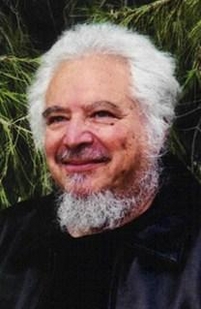 Robert J Kastenbaum’s Death, Society, and the Human Experience is an almost 500 page text divided into 15 chapters that intends to “contribute to your understanding of your relationship with death, both as an individual and as a member of society.” The book has been called a landmark text on the sociology of death and dying; it examines how societal attitudes and context influence how and when we die and grieve, how we explain death and loss, how we reconcile and integrate the knowledge that we are going to die, and how we reconcile and integrate loss.
Robert J Kastenbaum’s Death, Society, and the Human Experience is an almost 500 page text divided into 15 chapters that intends to “contribute to your understanding of your relationship with death, both as an individual and as a member of society.” The book has been called a landmark text on the sociology of death and dying; it examines how societal attitudes and context influence how and when we die and grieve, how we explain death and loss, how we reconcile and integrate the knowledge that we are going to die, and how we reconcile and integrate loss.
The scope of the book is incredibly broad. Kastenbaum looks at death and dying through the lenses of the social and behavioral sciences, as well as the humanities (philosophy, religion, art, literature). Chapter headings include: “As We Think About Death,” “What is Death?”, “The Death System,” “Dying,” “Hospice and Palliative Care,” “End-Of-Life Issues and Decisions,” “Suicide,” “Violent Death: Murder, Terrorism, Genocide, Disaster and Accident,” “Euthanasia, Assisted Death, Abortion, And the Right To Die,” “Death in the World of Childhood,” “Bereavement, Grief and Mourning,” “The Funeral Process,” “Do We Survive Death,” “How Can We Help,” and “Good Life, Good Death.” Whew, that’s a lot of cover in 500 pages.
I’ve yet to come across another book that covers the sociology of death and dying so comprehensively.
If you’re looking for a one-stop-shop text discussing everything from terror management theory, to the ethics of harvesting and merchandising of transplant organs from imprisoned people, to new neurophysiological perspectives on suicide, to compassion fatigue in the healthcare provider, to the long-term effects of childhood bereavement, to the mourning practices of the Hmong people, then this book is for you. It seems not only to be a landmark text, but as of yet, still one of its kind. I’ve yet to come across another book that covers the sociology of death and dying so comprehensively.
I purchased the Kindle version of this text when my grandfather was in a coma, dying in the hospital. Intellectualization is one of my primary coping mechanisms; I tend to want to consume endless amounts of information on whatever is causing me pain. If intellectualization prevents you from feeling your feelings, it becomes maladaptive.
However, by giving a focus to your overwhelming grief, it can be a relatively benign way to take the edge off. As soon as I purchased this book, I realized my head was too foggy with sadness and confusion to actually focus on it, and I ended up reading pieces of it over the next few years (there’s a ton of information to process). Once I did get around to delving into it, I was fascinated, and I’ve appreciated having the text around to reference or pleasure read certain passages again. I am particularly interested in the section on death anxiety, which examines how religious beliefs, age and gender play into our experience of anxiety around death, and not necessarily in the most expected ways. Death anxiety seems to peak at age 20 in both men and women, and decline to a new low for people in their 70s.
Self inventory quizzes at the end of several chapters encourage the reader to examine their individual relationship to death and dying attitudes and beliefs, personal experience with death, feelings around death and loss, etc.
The book shifts in tone between a broad sociological perspective on issues surrounding death and dying and a more intimate, personal approach. Self inventory quizzes at the end of several chapters encourage the reader to examine their individual relationship to death and dying attitudes and beliefs, personal experience with death, feelings around death and loss, etc. Robert J. Kastenbaum, who passed away in 2013 at the age of 80, held a doctorate in psychology from the University of Southern California. He established the first university-based educational and research center on death and dying at Wayne State University in 1966, and founded and served as the first editor of two journals in the field of death of dying. His work furthers the conversation around these important issues, rebelling against death-denying culture and opening up space to really examine our relationship to one of the most significant things that will happen to us as humans.

 ”Death, Society and the Human Experience” by Robert J. Kastenbaum
”Death, Society and the Human Experience” by Robert J. Kastenbaum



 “Help Me, Helen”
“Help Me, Helen”
 Recovering Cremation Remains After the Los Angeles Fires
Recovering Cremation Remains After the Los Angeles Fires
 “As Tears Go By” by Marianne Faithfull
“As Tears Go By” by Marianne Faithfull














